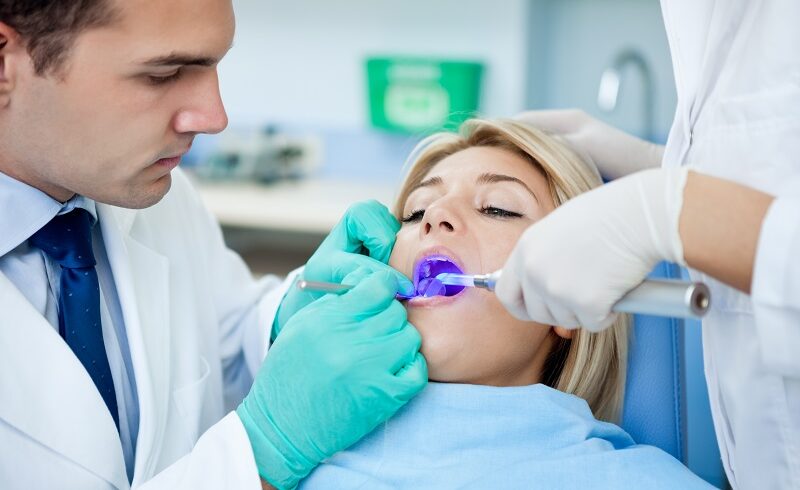
Introduction
Are you self-conscious about your not-so-pearly whites? Seeking a brighter, more confident smile? You’re not alone. Teeth whitening is becoming increasingly popular, and with so many methods available, it can be challenging to find what’s right for you. This comprehensive guide will cover everything you need to know, from the basics of teeths whitening to the various methods, costs, safety concerns, and tips for maintaining your dazzling smile.
-
Understanding Teeth Whitening
Teeth whitening is the process of lightening the color of your teeth by removing stains and discoloration whitening treatments. It is a common cosmetic dental procedure that can significantly improve the appearance of your smile. Teeth whitening works by breaking down the stains on the tooth’s surface, which are typically caused by various factors, including aging, consuming certain foods and beverages, smoking, and poor oral hygiene.
-
The Different Methods of Teeth Whitening
There are several teeth’s whitening methods available, which can be broadly categorized into at-home and professional options. At-home teeth whitening methods include over-the-counter products like whitening toothpaste, strips, gels, and trays, as well as DIY natural alternatives. Professional teeth whitening services are provided by dentists and typically involve in-office treatments or custom-made take-home kits.
-
At-Home Teeth Whitening Options
At-home teeth’s whitening products are convenient and generally more affordable than professional treatments. Some popular options include whitening kits:
– Whitening toothpaste: These contain mild abrasives and polishing agents that help remove surface stains. They can provide modest results but won’t change the tooth’s natural color.
– Whitening strips: teeth whitening strips Thin, flexible strips coated with a peroxide-based gel that adheres to the teeth. They are typically worn for a set period each day for up to two weeks.
– Whitening gels: Peroxide-based gels that are applied to the teeth using a brush or tray. Depending on the product, the application time can range from a few minutes to overnight.
– Whitening trays: Custom-fit or over-the-counter trays filled with a whitening gel that is worn for a specified period, usually overnight.
-
Professional Teeth Whitening Services
Professional teeths whitening services, offered by dentists, can provide more significant and longer-lasting results compared to at-home methods. Some popular professional options include:
– In-office whitening: A dentist applies a high-concentration peroxide gel to the teeth and uses a specialized light or laser to enhance the whitening process. This method can provide noticeable results in just one visit.
– Custom take-home kits: A dentist creates custom-fit trays and provides a professional-grade whitening gel for use at home. This method can offer comparable results to in-office treatments but takes longer, usually two to four weeks.
-
The Cost of Teeth Whitening
Teeth whiten costs can vary greatly depending on the method chosen. At-home options are generally more affordable, with whitening toothpaste costing as little as $3 and over-the-counter kits ranging from $20 to $100. Professional teeths whitening services are more expensive, with in-office treatments costing between $300 and $1,000 and custom take-home kits averaging around $400.
-
Safety and Side Effects of Teeth Whitening
Teeth whitening is generally considered safe when performed correctly. However, some potential side effects and risks include:
– Tooth sensitivity: Whitening can cause temporary sensitivity, especially to cold, heat, and pressure. This typically subsides within a few days of completing treatment.
– Gum irritation: Peroxide-based whitening gels can irritate the gums, causing redness and discomfort.
– Enamel damage: Overuse or misuse of at-home whitening products, particularly those with high peroxide concentrations, can damage tooth enamel.
-
Tips for Maintaining Your Bright Smile
To prolong the effects of teeth whiten and keep your smile looking its best, consider the following tips:
– Practice good oral hygiene by brushing twice a day, flossing daily, and visiting your dentist regularly.
– Limit your consumption of staining foods and beverages, such as coffee, tea, red wine, and berries.
– Quit smoking, as it can cause significant tooth discoloration and staining.
-
Natural Teeth Whitening Alternatives
For those seeking a more natural approach to teeth’s whitening, some options include:
– Baking soda: Mix with water to create a paste and brush gently on your teeth to remove surface stains.
– Hydrogen peroxide: Dilute with water and use as a mouthwash to help whiten your teeth over time.
– Apple cider vinegar: Use as a mouthwash to help remove surface stains and kill bacteria.
– Oil pulling: Swish a tablespoon of coconut oil in your mouth for 15-20 minutes daily to help remove bacteria and stains tooth colored.
hydrogen peroxide or carbamide peroxide
Looking to boost your website’s SEO? Explore reputable platforms offering buy do-follow backlinks for purchase. Enhance your online visibility and improve search engine rankings with high-quality do-follow backlinks that drive organic traffic to your site. Invest in effective link building strategies and gain a competitive edge in the digital landscape.
Conclusion
Teeths whitening can significantly improve the appearance of your smile, boosting your confidence and self-esteem. With various at-home and professional methods available, it’s essential to consider the costs, potential side effects, and maintenance required when deciding which option is right for you. Additionally, incorporating good oral hygiene habits and considering natural alternatives can help maintain your bright smile for years to come.


